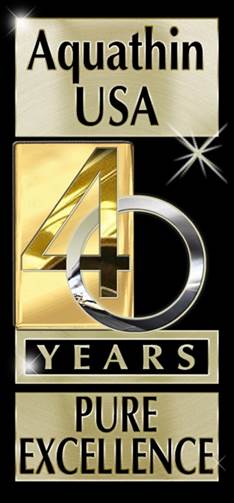Nonpoint source pollution increasing in UK
"Aquathin OP-ED Commentary"
This is a dynamite article from today's Water Technology Daily News. Wait till you read about the quantity of waste from pets alone.
Report: Nonpoint source pollution increasing in UK
LONDON — What is being billed as the most comprehensive report on nonpoint source, or diffuse, pollution here aims to stimulate
action by the government and environmental experts on an increasing and well-known, but largely ignored, problem.
The magnitude and frequency of diffuse pollution is forever increasing in relation to pollution from point sources, but until now
statutory control has been "piecemeal," said David Arnold-Forster, chief executive of the governmental agency English Nature. Foster
was welcoming the release of Diffuse Pollution Impacts: The Environmental and Economic Impacts of Diffuse Pollution in the UK.
A copy will be sent to Secretary of State for the Environment Michael Meacher.
The report is the result of two years of study by the Chartered Institution of Water and Environmental Management and the
International Water Association. It was released 16 October with a day of talks and workshops on diffuse pollution at the Institute of
Physics in London.
Diffuse pollution accounts for 40-60 percent of pollution from phosphorous and 80 percent from nitrogen, the report says. Other
major sources of diffuse pollution are particulate, heavy metals, hydrocarbons, pathogens and pesticides.
It presents a public health risk in the form of polluting drinking water. Arnold-Forster said runoff from potato farms, combined with
a depletion of buffer strips, has caused the River Wye to suffer from siltation and pollution from fertilizers. The causes of diffuse pollution
in rural and urban areas vary greatly, the report says. "We need to show the importance of trying to educate the farming
community in the older skills," said Arnold-Forster, adding that European regulation was essential to tackle issues such as
overstocking. Construction discharges, lane drainage and urban and industrial runoff were cited as the main causes of diffuse pollution in urban
areas. Dog feces was cited as just one example of a major, yet often overlooked, cause of urban diffuse pollution, as around 990
short tons is deposited on British streets daily.
According to Arnold-Forster, "carefully monitored pilot schemes in areas of great risk are essential" to combat all forms of diffuse
pollution. Funds should be concentrated where the effects of diffuse pollution are felt most acutely, and control programs must be drawn
up, despite a lack of certainty over some of their effects. "What we need is a catalyst to combat diffuse pollution, which is
external funding," Arnold-Forster added.
At present, the recently agreed-upon EU Water Framework Directive is the best opportunity for controlling the problem, but will require
new approaches for improved management of diffuse sources, Arnold-Forster said. "We should not let the directive become a piece
of obscure legislation," said William Halcrow, director of the Scottish Environmental Protection Agency's East Region, adding that much
diffuse pollution comes from pipes, which are regulated.
Fifty-nine percent of Scotland's lower-quality rivers and 83 percent of its lochs suffer from the effects of diffuse pollution, Halcrow said.
High-quality water is also very prone to diffuse pollution, where the effect takes "generations" to disappear, he said.
FOR THE BEST TASTE IN LIFE
Think Aquathin...AquathinK!!
Edited from Tech Bank 10/24/00


